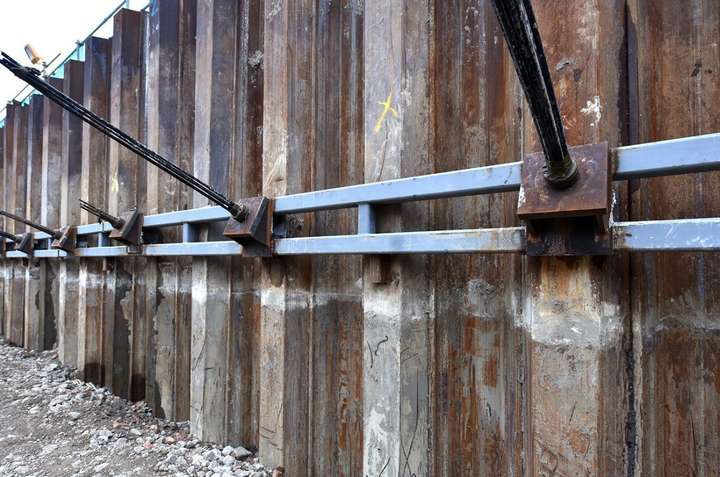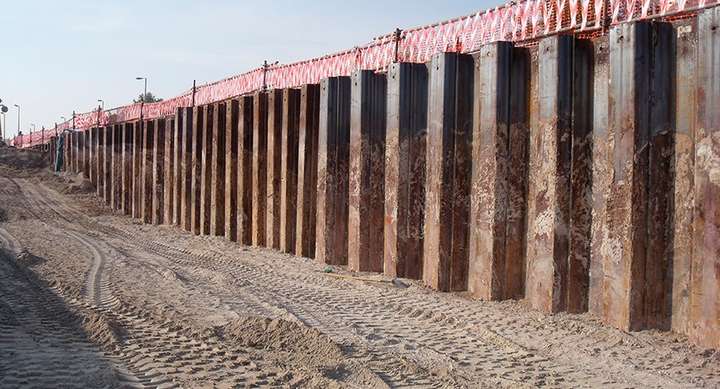Retaining walls are stiff structures that hold soil in place. They can be either vertical or slanted and provide temporary and permanent walls that meet certain engineering goals. When driving through steep terrain or even on the highway, you will almost certainly come across a retaining wall on the side of the road.

You will observe that retaining walls made of steel are usually strong and can be installed quickly to meet the moment’s demand. They are mostly used to alter the height of the surrounding terrain, especially when there is an ongoing project. Additionally, they serve different purposes on the highway. Bridge abutment wing walls regulate the slope close to the road while also protecting the abutment.
In cut and fill circumstances, retaining walls are utilized to expand highways. They are required on roads leading to overpasses in a bid to sustain the fill beneath the road. Retaining walls of various types and soil texture necessitate diverse solutions.
This piece will outline some of the information you need to understand what retaining walls entail.
Explaining Steel Retaining Walls
Steel sheets are the most common retaining walls. They are mostly utilized in engineering constructions that need to be built in the shallow open sea. They are also used in construction pits with a lot of groundwater.
They can readily penetrate enormous depths that are larger than 10m, thanks to their geometric form. Steel sheets come in various shapes and sizes, but they may be classified into those that withstand tension and those that bend easily. The first category includes LACAWANA and ROMBAS, whereas LARSSEN, KRUPP, and HOESCH are second.

Permanent or temporary retaining walls can be built with sheet piles. The main benefit is that the installation can happen within a short period. They are generally constructed to bend, as they will be carrying the full weight of the soil. Tensions and deflections should be monitored and confirmed regularly.
Steel sheets are constructed to interlock, and they are sequentially installed on a properly arranged excavation perimeter. They can sometimes be secured using anchors or rods if the soil pressure is very high or incoherent. Lagging and beams can be utilized when the soil is hard. For more information on retaining walls, you can check here: https://en.wikipedia.org/wiki/Retaining_wall.
Uses of Sheet Piles
Below are some of the uses:
- During construction, they are used to avoid cave-ins and intrusions, and this protects the workers in the area.
- Within a residential environment, it can serve as permanent walls, providing durability and stability to the basement walls.
- They are used to prevent flooding of buildings that are close to the sea.
- They are used to shield foundations from any form of water damage.
- To aid excavations for basements, parking structures, foundations as well as to design seawalls, cofferdams, and bulkheads.
Advantages of Sheet Piles
The following are some advantages to look out for:
- It is lightweight and this makes it easy to lift as well as handle.
- It is reusable and this makes it easy for engineers to recycle even after a long period.
- The different joints are constructed to withstand the pressure needed to keep them in place.
- Little maintenance is required both above and underwater.
- The designs are easily adaptable, making the process less cumbersome for most engineers. You can watch this video to see how the sheets are constructed.
On the other hand, there are also disadvantages that you may need to know, and we have discussed them below.
Disadvantages of Sheet Piles
Here are some disadvantages that we think you should know:
- It is difficult to install in rocky soil or soil with large boulders.
- If you use impact hammers or vibratory hammers during installation, you may be causing some noise pollution in the neighborhood due to the noise it generates.
- The majority of the sheets are temporary structures, and this means that they will be removed after the project has been completed.
Conclusion
These are some important things that you may need to know about steel retaining walls. You can also check out other internet sources if you need more tips.

